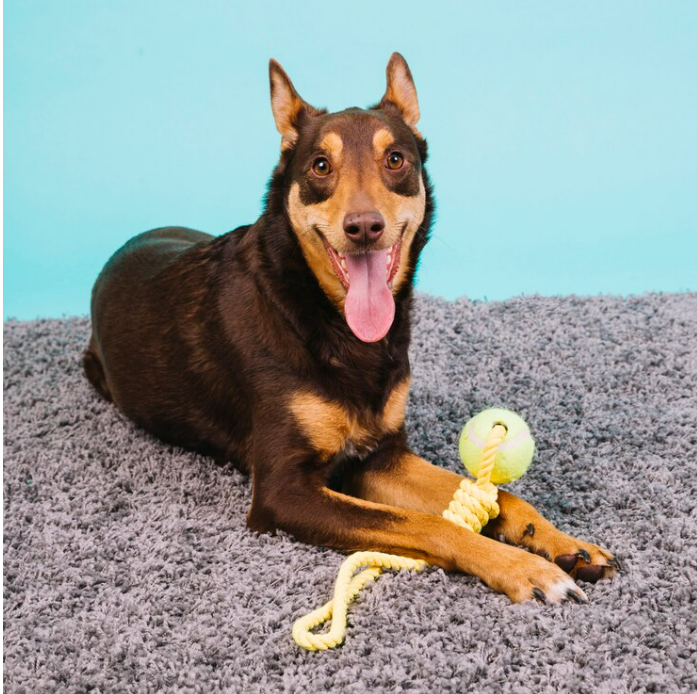
Get A Quote
How to Get a Dog to Play Tug of War?-The Ultimate Guide.
After a long day at work, your four-legged friend eagerly leaps up and down upon your arrival, desperate for your attention. This exuberance extends beyond mere greetings, as your furry companion tends to nibble and bite during playtime. Initially endearing, the behaviour took a concerning turn when he snapped at another dog during a recent walk.
To mitigate potential dangers associated with this over-excitement, redirecting his energy into alternative activities,.tug of war game is a good way to release its energy. Let me show you how to get a dog to play tug of war and why and benefits of tug of war with dog.
Benefits of Tug of War with Dog
Executed with precision and adhering to a few simple guidelines, playing Tug of War can prove to be an invaluable addition to your dog's repertoire of exercise and enrichment activities. This engaging game enhances your dog's eye-mouth coordination, refining their aim and grip. Serving as an excellent upper body workout, Tug of War targets the muscles in the chest, shoulders, forearms, and core. When played effectively, it fosters a deeper bond between canine and human, while also reducing the likelihood of resource guarding tendencies.
Moreover, my approach to Tug of War involves incorporating it into a training session that addresses six essential skills. This not only enhances the dog's overall impulse control but also promotes a quicker transition to a settled state after periods of heightened arousal. The skills practiced during this interactive play include: Drop, Sit, Focus (maintaining eye contact), Wait (while I toss the toy), Get it, and Bring it.
How to Get a Dog to Play Tug of War?
Selecting the Right Toy
Opt for a sufficiently long toy that allows you to maintain a firm grip while leaving ample room for your dog to grasp comfortably. Hold each end and present the middle section to your dog.
Wherever the dog grabs, you can release the end closer to its mouth. If the dog repositions during the game, moving toward your hand, simply grasp the other end, releasing the end it's closer to. This ensures the game continues without risking inappropriate contact.
If at any point during the game you feel teeth, even in accidental contact, drop the toy, pull your hands to your chest, and avert your gaze or turn away from your dog for 10 seconds. This signals total disengagement (Active Disengagement). After the pause, you can resume the game with the same toy or offer a new one.
Note: Whether the dog continues playing with the toy or walks away with it doesn't matter. The game between you has concluded, and the dog will learn that teeth touching you routinely ends the game. To continue the game, she'll become more mindful of where she places her teeth.
Let the Dog Win
Allow the dog to win 50%-80% of the time! This may seem contrary to some beliefs, but it's crucial for building a bond and trust through the game. Games should be enjoyable, with both sides experiencing victory. Regularly letting the dog win fosters enjoyment, leading to a desire to continue the game and strengthening the bond.
Letting the dog win involves releasing the toy. Instead of disengaging, as described earlier, stay fully engaged. Using a cheerful voice, say something like, "Oh! You win!!!" and leave your hand available, palm toward the dog. This often results in the dog pushing the toy back into your hand to prolong the game.
When Finished Playing
Clearly communicate the end of the game by saying something like "Finished," then walk away. You can exchange the Tug toy for another approved toy or allow the dog to keep the Tug toy as you exit the game. In either case, the dog will learn that "Finished" means playtime is over.
Conclusion
Consistency is key when addressing your dog's biting behavior. Be present whenever he shows signs of wanting to bite, and employ the toy and game consistently to establish new habits promptly. Make it a daily ritual, reinforcing the connection between the game, treats, and positive behavior. As your dog associates the game with rewards, he'll naturally gravitate towards it, replacing the inclination to bite people or other pets. Encourage this shift by having him bring the toy to you for a game of tug of war.
During this transition, gradually reduce the number of treats provided. Additionally, always allow him to win during the game. Similar to humans, a sense of victory will enhance his enthusiasm for future play sessions. This positive reinforcement approach ensures that your dog not only enjoys the game but also learns to redirect his biting tendencies towards a more constructive and rewarding behavior. DB will provide suitable toys for your puppies.

